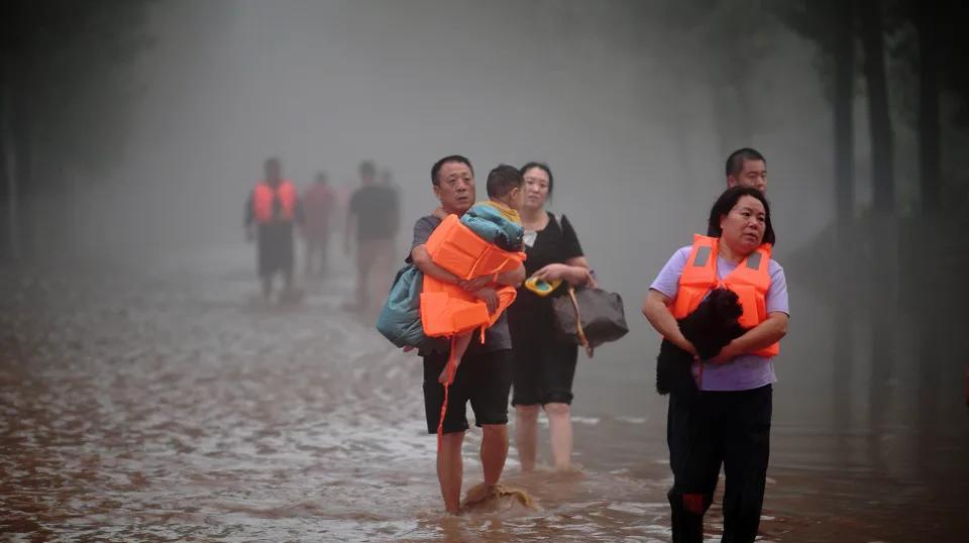
Beijing Soaked by Century’s Heaviest Rainfall as Typhoon Khanun Strikes Japan’s Okinawa
Beijing is grappling with severe flooding due to the heaviest rainfall it has seen in 140 years, according to local meteorologists. Meanwhile, Japan is facing the wrath of Typhoon Khanun, which is battering the country with strong winds and heavy rain.
Unprecedented Rainfall in Beijing
From Saturday to Wednesday morning, Beijing received a staggering 744.8 millimeters (29 inches) of rain. This downpour, remnants of Typhoon Doksuri, is the heaviest consecutive day rainfall since records began in 1883, as reported by the Beijing Meteorological Service.
Typhoon Khanun Hits Japan
Simultaneously, Typhoon Khanun, equivalent to a Category 4 Atlantic hurricane, is affecting Japan’s southwestern Okinawa islands. The typhoon, with winds of 220 kilometers per hour (137 mph), has brought 175 to 220 millimeters (6 to 8 inches) of rainfall to many locations in Okinawa in the past 24 hours.
Evacuation and Power Outages in Okinawa
The prefecture government ordered over 600,000 residents to evacuate their homes due to the typhoon. Strong winds have disrupted power lines, leaving more than 200,000 households without electricity on Wednesday morning, as stated by the Okinawa Electric Power Company.
Forecast for Khanun
The center of Khanun is predicted to stall in the East China Sea in the next 48 hours. It may potentially turn toward Japan’s northern Ryukyu Islands over the weekend, avoiding a direct hit to China’s eastern coast, which is already soaked by the remnants of Doksuri.
Impact of Khanun and Doksuri
Khanun is slowly losing its strength. However, its outer bands still pose a threat. They could potentially bring heavy rainfall to China’s eastern Zhejiang province. High wind gusts could also affect the area along the coast near Shanghai in the coming days. Khanun’s impact is not the first of its kind. It follows the aftermath of Doksuri. Doksuri caused floods in the western outskirts of Beijing. The floods were so severe that they swept away cars and even destroyed a bridge.
Casualties and Evacuations
The death toll in Beijing has risen to 12, with 12 others still missing. Over 127,000 people were evacuated from the city. Nine deaths were also reported in Hebei province that surrounds the capital, where rainfall shattered records at 10 weather stations.
In a nutshell, the record-breaking rainfall in Beijing and the impact of Typhoon Khanun on Japan highlight the increasing severity of weather events. As authorities work to minimize casualties and restore normal living conditions, these events serve as a stark reminder of the need for effective disaster management and climate resilience strategies.


